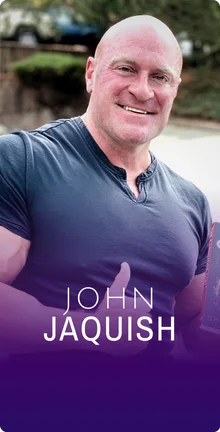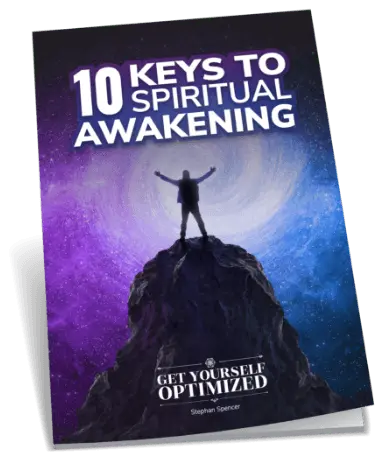Welcome, Ratna and Ulrich.
R: Thank you for having us, Stephan. We are delighted to be here.
First of all, let’s talk about high-intensity interval training because not everybody who’s listening knows what it is and why that is helpful and maybe it’s something they should incorporate into their workout routine.
R: I’ll take that one. HIIT is something that has been around for a while and it’s gained a lot of press and popularity as being the more effective way to get to your fitness and health goals. It’s supposed to be based around intervals and those intervals are extremely high intensity and you intersperse those intervals with less intensity. Basically, you recover, etc.
However, the problem has been that the scientists that researched on High-Intensity Training, the results that are published on High-Intensity Training, and what the consumer ends up doing are two different things, simply because the kind of machinery or equipment that is required to execute true HIIT is until now has just not been available for the consumer side.
The difference between HIIT and true HIIT, I will explain but I will start by saying things like Crossfit, or even spinning classes, or Tabata, or other modalities that claim to be HIIT, are at least 25-30 minutes long. During that time, you are working for most of that time. You are working hard for most of that time and you are going to sweat. That’s because the intensity at which you work is just isn’t high enough, which is why you need to spend longer doing it. The true HIIT, which happens in seconds and that’s what the research is in research, is about the maximum load your body can handle.
That requires a specific computer-generated resistance that’s tailored for you, that you work against. If you’ve experienced CAR.O.L, you’ll know that at the end of the 40 seconds, you simply cannot do it anymore. You won’t need to and you won’t certainly wouldn’t want to because if you do true HIIT, two 20-second sprints at absolute maximum intensity, that leads you to absolute fatigue at the end of the sprint, is all you need. There’s no need for extended HIIT training. Whenever you have something that’s self-guided like in a Tabata or whatever, it’s good. I’m not saying it’s bad but it’s in our definition still considered medium intensity training. Does that make sense?
It does. What you are saying is if you are doing something like spin class, you are doing an aerobic workout, but it’s not technically HIIT.
R: It’s not true HIIT.
You are not recovering enough with low intensity in order to make these true intervals.
R: No, you are not just at high enough intensity during the intervals because if you were, you just wouldn’t need to know what you’re able to do anymore.
We need to break down the barriers to exercise and the best way to do that is by having something that is the minimum time investment but maximum effectiveness. Share on XSo you are not going hard enough. Before your bike, was there some way to go hard out enough with some program or some device?
U: As Ratna said, research has been around literally for decades. By definition, there must have been a way to do it. In the lab, scientists use special types of bikes that can execute a Wingate sprint where you can basically pedal really fast with very low resistance and apply a very precise resistance very quickly, getting up to speed beforehand, then quick application of the right resistance that gets you to your maximum intensity levels.
The execution of this process is quite important. They obviously had the equipment and have the equipment to do that. The problem is this is basically a two-man operation or has been a two-man operation so far. You have a subject that has been recruited for trial and you have a lab technician standing next to the person and operating the bike.
Then you can execute the exercise correctly and you get the results that have been published in so many peer-review journals. What we also came across is this amazing science, the amazing results, and amazing evidence, then when we try to do it on conventional equipment that a normal consumer could purchase. We couldn’t replicate it ourselves.
That’s what triggered the development of CAR.O.L. We have this amazing science but no way to do it without a lab technician by our side. That’s not really good. We set out to develop the consumer-friendly version of that, it actually brings the benefits of that fantastic science to a broad mass of consumers who otherwise wouldn’t have an option to do it.
R: CAR.O.L becomes your lab technician, frankly. That’s what she does. She generates the exact resistance. She measures your power. She measures the rate of which you get tired and she executes the protocol. In other words, she moves the motors and all that stuff at the right time. Every second matter.
By measuring your performance, your heart rate, etc., she will then change the next resistance. If you are getting fitter, for example, then she will make it harder for you because she’ll try to train you to be as fit as you can possibly ever be. As you know Stephan, on our bikes there are no knobs. You can’t twist and adjust the resistance. CAR.O.L does all of that for you and she can do it in decimal points.
When she changes resistance, it’s in tiny increments. Half of the time you won’t even notice it. You will sometimes notice it but the idea there is that we are very precise in the way we train you. We train you to get to your maximum.
Up until now, there has been nothing on the planet that would tell you that in 40 seconds of hard work, you will get fitter than any traditional exercise. Forty seconds. No spinning company can do that, no sprint class can do that, no CrossFit class can do that, no Orangetheory can do that, no Tabata class can do that. Nothing that people think is high-intensity training can get you fitter than a traditional exercise in just 40 seconds.
I’ve tried some different devices that give you fast results, but it wasn’t for the cardio aspect. It was for weightlifting. The device I am thinking specifically of is the bioDensity machine. Tony Robbins was a huge fan of this device. He had one on each of his homes and I tried it. It’s interesting. It’s like you need to hard out resits or not resists.
You actually work to your maximum with a chest press, leg press, and so forth. There are four different exercises and you can do it for 20 seconds or something like that, and then you’re done. It’s like a two-minute thing and that’s it, but it’s a $25,000 piece of equipment. It’s something you go to the gym or the chiropractor who invested in that device and they don’t have a lot of them around.
I actually had John Jaquish, the inventor, on this podcast talking about the device. I ended up not buying one. I was seriously considering it but I didn’t buy one. I’m curious what your thoughts are. You handle the cardio side of it with the bike, but what about the weightlifting, like putting some stress on your muscles to build some muscle density and some muscle fiber?
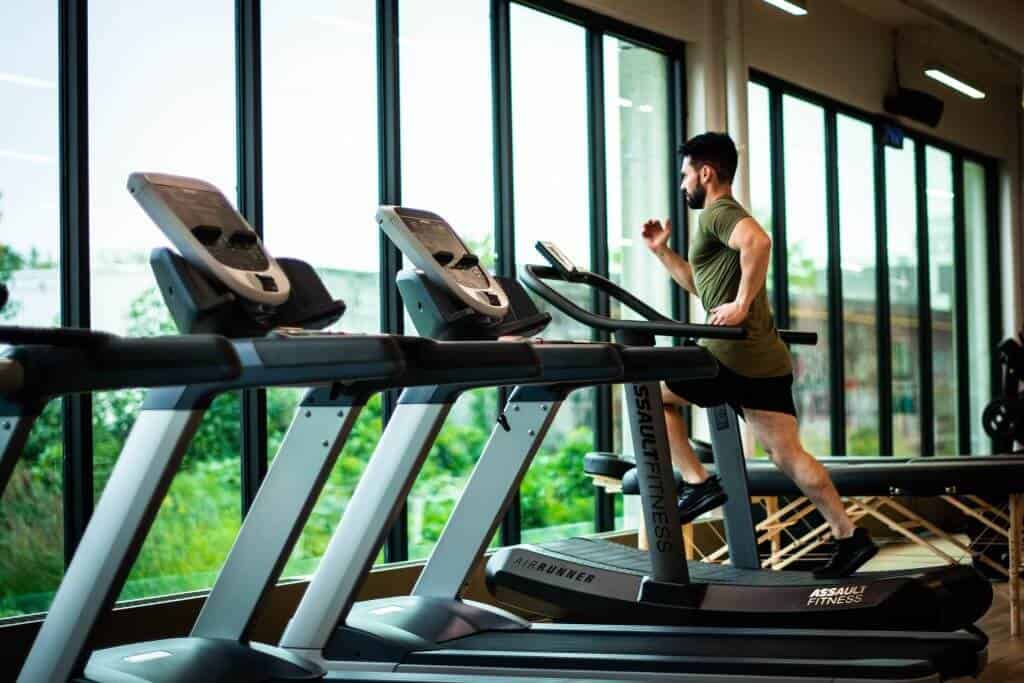
U: There’s certainly another really important aspect. For example, very close friends and good friends who we work with closely with the folks at ARX and we love their machines for strength training. In fact, many of our commercial customers like gyms and biohacking facilities actually have ARX machines for muscle and bone density. We have the CAR.O.L bikes for cardio and the philosophy is very similar.
It’s providing maximum load and the really intense, maximum intensity stimulus to trigger a biological response. What we are basically doing is based on rapid glycogen depletion. That’s what we are mastering. We managed to burn through so much sugar in your biggest sugar stores, your quads and your glutes.
This is kind of well understood, it triggers an adaptive response that strengthens your cardiovascular health and the key to that is through the rapid glycogen depletion. You can’t deplete glycogen with a number of different forms of exercise but CAR.O.L is the one that achieves the most rapid form of glycogen depletion and definitely gets for your cardiovascular fitness and for your cardiovascular health the best results. It is, therefore, a preferred augmentation to other smart exercises that help you with your bone density and help you with muscle mass.
I think you’ll find all of those hacks work beautifully together and help you get quite a comprehensive set of physiological benefits in minimum time. We have some customers who love their resistance work but they recognized that they also have to do something for their cardio. They get out of the way quickly and spend more time with their resistance training. Others want to have everything out of the way as quickly as possible and then use a CAR.O.L-ARX combo that you don’t need more than half an hour a week.
R: To add to that, I would basically say that we absolutely say that if you want to build your upper body or if you want to do stretching, you do need to do resistance training. You also need to do yoga, for example. We love yoga and we think that’s a perfect complement to CAR.O.L as a machine like ARX.
The strange thing is that our scientists have told us that the stimulus that you get is so potent that some of the adaptations that you get, they don’t even know how that happens. I’ll give you an example. A lady called Sky Cowan. She is an independent vlogger and she does a lot of HIIT training. She does a lot of yoga and all kinds. Every day she is doing something and she loves all of that.
She had a bike CAR.O.L and she thought, “I’m going to stop everything and I’m going to see if I can put this AI machine to the test for 30 days and see what results I’m going to get.” She had a body scan. She did her fat percentage calculation and her muscles. She was already quite lean.
I think she was at 16% fat or something which is lean. She just did CAR.O.L three times a week. At the end of 30 days, she measured herself again and she had lost more fat so she was at 13% fat, and she gained muscle. That was the weird thing, that she actually gained muscles even though she did no strength training.
It could be that she gained a lot of her thighs, her carbs, and her glutes, and something in her triceps because when you are holding on for 10 minutes, it actually tones it. I would say, do some more. As I say, we don’t target people who want to be bulky. We just target people like me and Ulrich, who got families and who’ve got no time and no interest in long exercise. They just want to get it over and done as quickly as possible so that they are healthy and they are around for a long time in a healthy way, the smart way to do it.
The two 20-second sprint, you surround that with three minutes of warm-up. You got three minutes of recovery and a three-minute cool down so all in, we are talking about a total of 10 minutes session.
It’s not like a 40-second exercise, then you are done. You don’t have to do the low-intensity stuff to complete the exercise.
R: Absolutely you do and each segment has its purpose. Obviously, the two-minute warm-up is a two-minute warm-up for obvious reasons. The recovery in between the two sprints are also necessary because you need to have a good second sprint so you just need to recover, get your breath back, and just do a better refueling if you can. Then the last three minutes, the cooldown is to build up your blood pressure back up again so that when you get off the bike, you are not feeling dizzy or nauseous.
They have a purpose, but the actual work is only 40 seconds. The other thing is it’s like you are walking, you’re producing no more than 12 watts. Tiny.
To break a sweat.
R: That’s right.
It is interesting like you have this video of a guy with a full suit on your website. It’s kind of bizarre for me to see that, but I get the point of it, but it took a while to figure it out. It’s like, “Okay, you are trying to point out that you don’t break a sweat.” It just seemed weird to me, but anyway, the idea of not breaking a sweat. Why is that important?
R: Because it’s all about time. It’s really about the income. We found that the biggest barriers to exercise, people say, they don’t have enough time, it’s inconvenient and I have to go to a destination, I’ve got to change, I’ve got to shower, all of that takes time. I don’t want to do it.
Up until now, there has been nothing on the planet that would tell you that in 40 seconds of hard work, you will get fitter than any traditional exercise. This is precisely what CAR.O.L offers. Share on XThis is eight minutes, 40 seconds all in. You don’t need to change. You don’t need to shower. You just go get your exercise done and you will feel it. I’ve just come back from a show at Miami. A number of people came back the next day to say, “I’m still feeling it,” and I said, “Yeah, you will. You will be feeling it.” It’s quite remarkable.
It’s really about time. If you had to shower and sweat, then we are not that differentiated anymore. We are getting closer to the other types of offerings that are there. But in our mind, we need to break down the barriers to exercise and the best way to do that is by having something that is the minimum time investment but maximum effectiveness. This is the funny thing, Stephan. It’s more effective. CAR.O.L is more effective than 30 minutes of jogging every day.
So why is that? Let’s really debunk some myths out there and let our listeners know the science behind this.
R: It is more effective because it is a very potent stimulus. Think about us as human beings who have evolved over time. Our lifestyle has evolved a lot faster than our bodies have. We still have that survival mechanism. We still have that flight or fight response. What we simulate with CAR.O.L is the way your body should exercise.
Just think about it, if you are a caveman and you’re out in the Savannah, if you jogged all day long, you won’t have the energy to run away from the tiger. What did the caveman do? He walked and he looked for food, or he ran for his life. That’s what we simulate. You walk during the slow periods, warmup, cool down, your recovery, and then you run for your life away from the tiger for 40 seconds, two 20-second sprints.
The science, the way it works is that your body gets a massive shock suddenly when you do the kind of exercise that we do. As Ulrich said, you have rapid glycogen depletion. You reach your peak power within the first 5–10 seconds of the first sprint and then you reach that power for a fraction of a second, literally. It is impossible to continue to hold that and nobody can do it, not even rugby players. It’s just impossible.
Then you start to lose your power when your glycogen is depleting. Clearly, your energy storage isn’t depleting rapidly. By the end of 20 seconds, it’s enough for you, done. Now, your body sees that and says, “Oh my god, Stephan is on empty. Suddenly Stephan needs 900 watts of power. He needs so much more oxygen. He needs so much more energy.” Because as humans, we are highly adaptive. Your body changes, you adapt. If you adapt to become the person that it thinks you want to be or the needs you have, it’s unlikely that you will be producing high wattage.
We see this all the time in shows. People come and say, “Yeah, I do a lot of exercises. I do a lot of cycling,” then they come on, the power is not that high and their power per heartbeat is certainly as high as some of our riders who will never say that they are particularly athletic.
I think that’s how it works. It works because it puts your body under threat and your evolutionary mechanism kicks in to make sure that you survive. The demands you put on your system are so high that your body has to adapt to give you what it thinks you are asking it for.
Now you have a few different options besides the two 20-second sprints, you can do two 10-second sprints instead, or you can do a fat burner mode of 30 sprints in 10 minutes. What are the differences and why would you want to do one over the other?
U: The anchor protocol is what we call the Intense Ride. The two times 20-second sprints, that’s basically what we’ve been talking about so far. It’s got fantastic evidence in terms of improving your cardiovascular fitness, respiratory health, so that a lot of health markers and helping with weight management, all fall through different mechanisms.
When people think about weight management and do exercise, they generally think they want to burn a lot of calories while they do the exercise. That’s actually not how you get the benefit from the two 20-second sprints. There’s more. First, your metabolic rate changes and you have a much higher epoch. It’s excess post-exercise oxygen consumption. You burn calories longer for off to the right and your insulin sensitivity improves a lot which is incredibly helpful to lose weight, if that’s your goal, and if your insulin resistance becomes resistant. It becomes difficult, almost impossible to lose weight then.
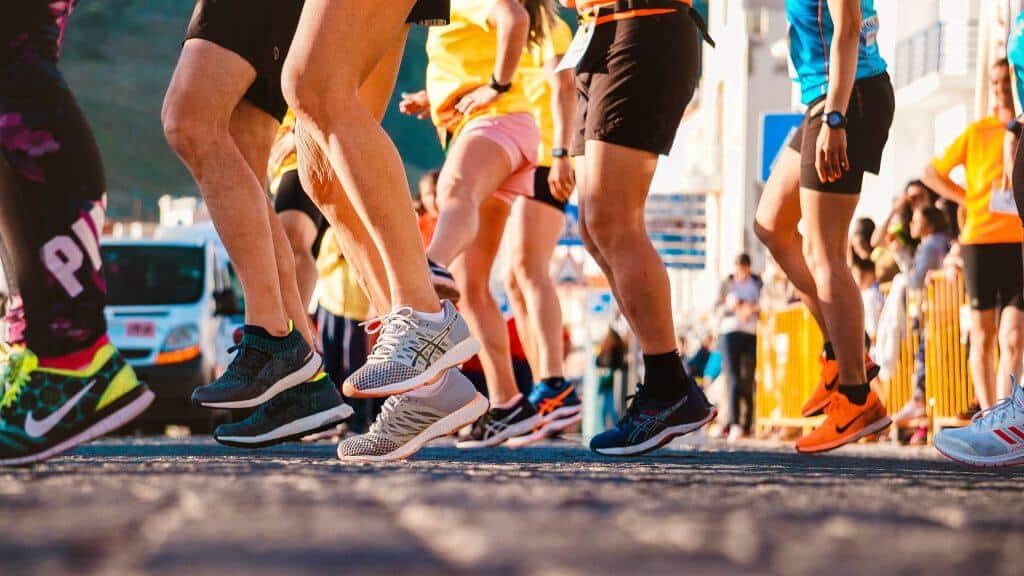
That’s the two 20-seconds. The 10-second one, that’s basically an energizer for people who wanted to do something every day. You don’t have to do it every day. The evidence, most of the scientific studies were done three times a week. The latest research indicates that two times a week might be enough. Certainly, once you reach your target, your potential, your maintenance, there could also be fewer rides per week.
Those shorter sprints are for people who just want to use it every day. The fat burn, that’s something that you do sweat and you do burn a lot of calories. You do a lot more work on the bike so it’s either a 30 or 60 cycles of 8-second sprints, 12 seconds recovery. It’s very intense, there you spend your energy, you do actually burn a lot of calories on the bike and it’s been proven. Again, there’s good scientific research to have a very direct and much more potent effect on your fat stores.
There have been studies to show that this is nine times more effective to lose fat than moderate-intensity exercise, but it’s a different thing.
R: It is a different thing, but I just want to say that as Ulrich said, our lead protocol is 20-second stuff and that’s the one CAR.O.L is always changing depending on your changing fitness levels. It’s important to say that their resistance can come down if you are struggling. If it’s too much, you’ll bring it down if you just went like that and you’re off the deep curve.
The fat burn is linked to that. Let’s say you’ve done 10 of the core exercises and then you choose fat burn. It looks to see what the resistance is and it will discount it by 40% because, at full-on 8 seconds, 20 or 30 times will just be way too much to you.
The endorphin boost in that one is massive. Why did we do it? To give people variety, to give people the option that they can use something else if they want to. Not many people do. Pretty much I’d say 90% of people stick to 9 minutes, the lead protocols because it’s very effective. When you ask them, “Why didn’t you use the fat burn?” “Oh, it’s another five minutes.” Every minute counts. This is how much people want their time. They won’t add an extra five.
But what if your outcome that you are after is to go from 22% body fat percentage to 12%?
R: We have different packages for people. We just say, “Look, if you want to burn fat rapidly, do this. If you want to burn fat slowly, do this. If you want to get really fit, do this.” I would suggest if they want to lose fat very quickly, I would say one fat burn a week and two intense, that should be great.
Okay. The fat burn mode, is that going to just wreck you? As far as feeling like, “Oh my God, I can’t do anything for the rest of the day.”
R: No. It wouldn’t do that, but it does wipe you out at the end. The endorphins, however, are really popping and we’ve got customers who because they are so pumped up at the end of it, that they do an intense as well. They do back to back which they don’t need to but they just want to. And the next day you recover. You recover fine.
How does this differ for somebody who will be deemed a sugar burner versus a fat burner?
R: What do you mean exactly?
Depending on how you eat, and what you eat, and maybe your genetics as well, you tend to burn sugar more than you burn fat and if you burn sugar, then you don’t lose weight. It’s really hard to lose weight. That’s a big reason to go Keto, for example, you’ll burn fat more than you’ll burn sugar.
R: Why does Keto work? Because it drops your insulin levels. When you got high levels of insulin floating about, you are absolutely not going to burn fat for energy because insulin is a sugar transporter and a fat blocker.
When you do what we do, you drop your level of insulin significantly and the way it works is this, the thigh muscles—remember from an evolutionary perspective—sugar is burned either locally or is sucked back in from your blood and stored for burning again in cases the tiger is chasing you. It doesn’t actually come out of your thighs into your bloodstream unless conditions are extreme.
When you rapidly deplete the glycogen, the body panics and sucks up sugar from your blood and restocks it into your thighs. That’s an insulin-dependent process and once the sugar is gone, the insulin is gone. If you now need to burn sugar for energy and you don’t have many floating around, what’s going to happen? You can burn fat for energy, it turns into sugar. I do answer to your question, does it?
Maybe. Let’s bring in a piece of that glycogen and how important it is to do the rapid glycogen depletion. How does that fit into this equation?
R: The rapid glycogen depletion has to happen in order for you to be at absolute fatigue, in order to trigger this panic reaction in your body, and in order for you to refuel rapidly and for your insulin levels to go down. That’s a vital thing. If you want to do it slowly, you can burn your glycogen slowly but it’ll just take you longer. The effect will eventually be the same, it just takes you an hour, 60 minutes, 25 minutes. The rapid glycogen depletion will cause total fatigue in 20 seconds. If you didn’t do rapid glycogen depletion, you would have fatigue in an hour.
HIIT triggers an adaptive response that strengthens your cardiovascular health, and the key to that is through rapid glycogen depletion. Share on XU: It’s also the molecular response, that’s a different one. As you burn, kind of having this rapid glycogen depletion first, you can’t use your preferred stores or sources of sugar or fuel. Usually, in a steady-state, modern intensity exercise, you would take the sugar or the fuel you burned from the bloodstream. If you operate at maximum intensity, you can’t quickly enough absorb the sugar from the bloodstream, therefore you have to burn what’s stored locally. That’s one thing.
The other thing is because it’s that high-intensity level, it’s anaerobic exercise and you have to basically convert a lot more glycogen than you would in aerobic exercise. Now, my point is, burning the local stores so quickly basically triggers the release of signaling molecules that don’t get released and activated.
I have to say that I am a mechanical engineer in our team and the data scientist, Ratna is the microbiologist. You create in that ATP cycle in which your mitochondria create the energy for the muscle to basically function. First AMPK, as a product of the cycle, and then that gets activated to release what’s referred to as a master’s switch, PGC-1alpha, that just signals to your body that its current level of fitness, strength, and function is not sufficient for the threats and the demands that are placed on it. Therefore, it triggers a completely different response and a different response mechanism than normal exercise would do.
There are different pathways, basically, how your body can adapt, but this is a pathway on how you get this minimum effective dose so quickly. If you go for a run for an hour, it’s a different pathway. What helps you here is basically the release of certain signaling molecules that completely that just trigger a different biological and adaptive response of your body.
R: For that purpose, if you look at the Astudy, they show that the blood should drop quite a bit and your cholesterol level drops quite a bit. So, I think in order for people—even if you are, as you say, a sugar burner and not so much of a fat burner—if you clear the sugar from your bloodstream which is what keto does, you could think of us as a keto bike. That’s what effectively we do. We take the sugar away from your bloodstream, stick it back into your thighs and say, “You have to burn fat for energy.”
Why 40 seconds and not 60 seconds?
U: That’s empirically tested results. As we said earlier, the Wingate sprint, the Wingate protocol has been around for quite a while. The Wingate Institute was founded in 1975 in Israel. They established the principle of maximum intensity sprint intervals and figured out that it’s very effective. Published a few papers, different research groups, PodScience entries in the world picked it up and basically try to do two things. One, understands why it is so effective and that’s quoting our scientific advisers, explaining the biological and molecular response.
The other thing they did was try to titrate it down to the minimum effective dose. How much do you really have to do to trigger all those biological changes? They tested that. With ultrasound, you can monitor the level of glycogen depletion you achieve through biopsies, you can measure the molecular changes that occur. They’ve just tested. I guess it’s a normal thing to do.
You first start with something that works really well and if you did a little bit too much of it, you use a 30-second sprint, 40-second sprint. You use four, five, six sprints because you think it helps a lot. Then, you try to dial it back and see what’s the minimum we can get away with both tracking the molecular changes and measuring the results over a period, and randomized control groups of subjects and so on. That has been answered. Two times 20 seconds is the minimum effective dose. If you do 10-second sprints, that doesn’t happen. The signaling molecules don’t get released and activated.
If you look at a group who did that for six weeks, they don’t get the benefits. Two 20-seconds sprints, yes, that does it, 30 seconds, it also does it. Yes, it works but a whole lot harder on your body. If you try to operate at maximum intensity levels, 20 seconds is pretty long.
Yes. It’s impossible. The difference between a 10-second sprint and a 20-second sprint is significant.
R: You’ve done it, right?
Of course. I did it this morning.
R: There you go.
U: If you did that 30 seconds or 40 seconds. It would feel a ton harder and it would be a lot rougher on your body for no additional gain. That’s what CAR.O.L really is, it’s the minimum effective dose of the most effective form of cardio exercise in a really consumer-friendly, fully -automated package that helps you get it right every time.
You don’t have to think about it very much, you get on it and CAR.O.L would coach you through the session. You do have those two 20-second sprints, you have to go all out in the warm-up, in the recovery, you can go very, very soft and just do some mindfulness and breathing and you just go all out on those two 20-seconds. Then hey, that’s when the magic happens. You get fantastic results.
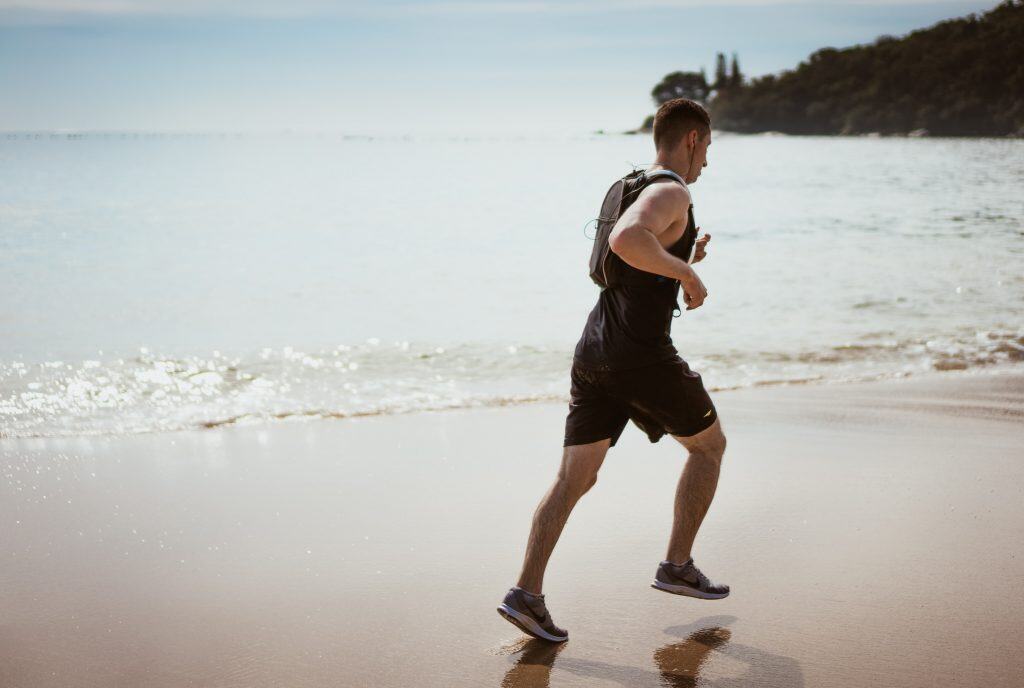
R: Stephan, if I could add to that, normally, we talked about true HIIT being the prerogative of laboratories and they are all subjects, young men, students, a lot of the time. They finished doing the 30-second sprint but the reason true HIIT didn’t make it into the mainstream was also because it was just way too hard for normal people to do it. You said you’ve done the ride, of course, you do. At the end of 20 seconds, if you want to do another 10, you’d be like, “No, thank you.” They’ll put you off the ride.
As Ulrich said, we know that in the first 10 seconds of the first sprint, you deplete your glycogen. In the second 10 seconds of the first sprint, you released AMPK and in the second sprint, you activate the signaling molecules and the main one being PGC-1alpha and that’s the master’s switch. In any subsequent sprints, nothing else happens. As you were saying, this is the pathway that needs to get activated to create different changes. They at all completed in doing the 20-second sprint. There’s really no need to do anymore.
All right. What’s the importance of mindfulness breathing in between the two sprints? I mean, how important is that?
R: We put that in because we’ve got people. We thought it first. If this is going to go into companies, corporates, and people who are sitting around four hours at a time and they’re probably stressed. We’ve worked and we’ve been stressed.
When you come on CAR.O.L, we wanted it to be a mind and body workout. Everybody talks about mindfulness but it’s difficult to just sit and breath. When we’ve got you, a captive audience on the bike, perhaps we have a visual way to show how breathing can work in their mindful way. If you practice doing it on the bike, you might be able to continue practicing it at your desk, your home, or when you’re walking.
It’s really our attempt to help people do mindfulness breathing in an easier way. For them to also switch off, the exercise is hard enough and your brain will switch off and mindfulness is also attempting to do that. There’ll be a Kundalini breath coming soon, it’s the victory breath. Amazing. I’ve tortured my children with it. I’m going to torture my riders.
For those of us who don’t know what Kundalini breathing is, I’ve tried Kundalini yoga. In fact, I want to have a Guru Singh on the podcast talking about it. He said he’d be on the show. Stay tuned, listeners. We’ll hopefully have him on. Give us a quick explanation of Kundalini breathing.
R: Well, there are many different types of breathing. The one I like is Kundalini breathing because I find that it really changes that brain chemistry for me. I did it to my children just before exams. I have them in the car and in about five minutes before they’re about to go into exams. I’m like, “Come on, we’re going to do this now.” It really helps calm people down. It’s very simple. You take a deep breath in and then you hold it, then you count vic, to, ry. It’s literally three words, three seconds. Vic, to, ry, release. You do that several times.
As you will find out from Guru Singh, when you do Kundalini yoga, you always have to start by a prayer to the guru. There’s a special prayer before you do anything in Kundalini. This is the only one where you don’t need a special prayer. You can do it on the fly, you can do it on the bike, you can do it in the back of your car. People don’t have to like it. They don’t have to use it if they don’t like it but if they do, that’s great. It’s another way for them to help their body.
Our lifestyle has evolved a lot faster than our bodies have. We still have that survival mechanism, and what we simulate with CAR.O.L is the best way your body should exercise in the least amount of time. Share on XOkay. Actually, let’s try it right now. Let’s get the listeners to do this with us.
R: Deep breath.
We’re going to do a deep breath. Okay, here we go.
R: Deep breath. Hold it. In your head, say vic, to, ry. Then, slowly exhale. Slowly.
Okay. Maybe that wasn’t so slow. I’ll do better next time.
R: Try again. Vic, to, ry.
Pretty good.
R: My mind is feeling woooh. Is it good?
Yeah. So, you do a three of this?
R: No, you can do five minutes of it. We’ve got them for three minutes slots and we just activate it.
That’s awesome. My wife, Orion, learned at Naam yoga those breathing exercises and I teach a lot of people because it’s just so invigorating. You breathe in and you hold it, and then you start tapping on your chest with your fingers. Sorry, I messed it up.
You got to breathe in, then you breathe in a little more, and then a little more. Then, you tap on your chest with both hands, with the fingers. Then, let it go. You do that, let’s say, twice and it just feels so invigorating.
Sometimes, if I’m giving a speech after lunch and people seem sleepy, I’ll get them to stand up and do this. I’ll think, “What the heck? I’m in the room for SEO talk and I’m getting a breathing exercise” This is so weird. But then, they feel so much better. I get them to raise their hand like, “Who feels more awake, more alert, more invigorated?” Everybody raises their hand.
R: Absolutely. I felt good after doing that. There’s stuff that we can do when we’ve got people on the bike, we can play with different breathing techniques.
That’s super cool. So, one more question about the bike and how that relates to biology, biochemistry, and all that. Actually, specifically genetics. How does your gene make up fit into this? I had Kurt Johnsen on the podcast a while back, founder of Simplified Genetics.
The whole premise of that is you get a genetics test from his company, which I did get, and it tells you the percentage of a low-intensity workout versus a high-intensity workout you should do. Also, the percentage of macronutrients that you should intake based on your genes. It doesn’t go into all these details, it’s a very simple report that you get back. Your percentages and if you want to know the science behind it, there are a lot of research that you can read up on, but it’s very simple and very easy to wrap your head around and it’s very practical. I’m curious what your take is on that?
R: Sure. We’ll give you a take but I’m curious. Did you find that this was accurate? Did you find that it resonated?
You know, I didn’t actually apply it for long enough that I got any noticeable difference. I was kind of embarrassed to admit that. I should really go back and review the result and really give it a good try this time because there’s good science behind it and I believe it. I have a masters in biochemistry. It made sense to me when you explained it. But then, you get busy with life. It’s hard to install new habits.
For those of you who are listening who have a problem installing new habits, I’ll definitely listen to BJ Fogg’s episode. He’s like the world expert on habit formation.
R: Let’s answer your question. Yes, you’re right. There’s 20% of the population that’s considered low to numb responders to anything that to do relative to improving aerobic health, 60% are good to moderate responders, some moderate to good, and 20% are super responders. They are elite athletes. Whatever they do, they just get an amplified effect based on the work that they’re doing.
Ironically, I am a numb responder. I’ve had my genetics tested. Ulrich is a moderate to good and he’ll go into his story in a minute because it’s very interesting. We will stop to pick this up though. Remember, we’re tracking your performance, we’re tracking your power per heartbeat, which effectively is how fit you are, and that is an important score that we give everybody because it shows not only how fit are they at baseline but how they’re improving over time.
For me, for example, my power per heartbeat or obtained score is not that high. It doesn’t increase that much. After about 8–12 weeks of regular years with CAR.O.L, we’ll be able to start to guess whether you are a lower responder, a moderate, or a super responder. We have super responders definitely. We have about six or seven of them. We have most people are moderate, good responders, and a few of us are bad responders. We will pick that up and we will use that information so that people can set their expectations because we don’t want them getting depressed that they’re not improving as much as they should. Just also let them know that this is it for them.
People should focus more on excess post-exercise oxygen consumption because it helps you burn calories longer even when you're done working out. Share on XAs you know, because you’ve got a masters in biochemistry, the wonderful thing called epigenetics. 23% of our responses from our genetics and the rest, it comes from elsewhere. Ulrich can say that even though he tested low, he managed to outperform his genes.
U: Moderate. I also did genetic testing and was identified as a low-to-moderate responder. I did VO2 max testing and I see the results on CAR.O.L. Now, we have CAR.O.L so that’s another reason why it is not just two 20-second sprints. We measure your heart rate and your heart rate recovery in these resting periods, in the cool down and recovery period. That makes CAR.O.L pretty much control the experiment every time you use it. It’s something that gets you fit, actually fitter than anything else, but it’s also a control fitness test each time you do it.
We see pretty much the same results over a cohort that scientists predict in their research. That’s quite comforting. We’re very happy to see that. We did the first test. It was amazing that we could replicate it.
But you love to fold your genes.
That’s the thing. I was predicted to benefit something like 12-15%. I’m sure enough that’s what I got after 8-10 weeks. It continued. I saw another 12% improvement over the next 10 weeks. Since I have done CAR.O.L, my cardiovascular fitness measured in an obtained score which really tracks very precisely due to maximum improvement by almost 50% which is a phenomenal amount and which would have not been predicted by the genetic test alone.
CAR.O.L basically opened a journey for me to do all sorts of other things as well like cold therapy and looking at my sleep, intermittent fasting, and a whole range of things that you probably practicing. It opened a whole new door for me. It helped me beat my genes and better them. Getting better results wouldn’t have been predicted.
R: Not me. I haven’t beaten my genes. I haven’t done everything that he’s done. I’m just doing CAR.O.L and that’s it and I’m happy with that.
U: For me, it was like an entry drug, I guess.
R: It is crazy.
Awesome. The VO2 max, for those of you listening who are not familiar with that terminology, could you guys explain that?
U: Sure. That’s your maximum capacity to metabolize oxygen. So, how much oxygen can you burn and you would measure usually with a breathing apparatus and slowly increasing. You use a protocol but you increase the intensity step-by-step until you really pop out.
A number of universities use our bike for exactly that test or even a number of gyms do that. We have a special protocol for our commercial customers in there. You can also use CAR.O.L for VO2 max testing with the breathing apparatus for the breathing analyzer.
For new normal consumers, because we have the obtained score that basically measures your power per heartbeat and does this experiment how quickly does your heart rate recover. The way we designed that is that it tracks VO2 max. It is something really quite different because CAR.O.L is an anaerobic exercise and we take you basically to your anaerobic limits but through tracking that, we can make a statement about how much your aerobic fitness has improved. That’s not just us talking.
First, the researchers, then we have been completely independently assessed and validated it in a randomized controlled trial by Western University in Colorado. Results were published and appeared in a peer-review journal that the whole study was funded by the American Council on Exercise which is quite the biggest non-profit in that arena. They’ve confirmed that the results we’re seeing in terms of VO2 max improvement are in fact they had. We could probably link to the paper in the show notes also.
Also, in that cohort, 12.6% improvement over 8 weeks of using CAR.O.L which happened to be twice as much as a control group. They spent five times as much time on moderate-intensity exercise, they went jogging. We doubled the results in 20% of the time. That’s not just in fitness but all the other health markers that they’ve tracked around insulin sensitivities, metabolic risks and so on.
R: VO2 max is a very strong predictor of your future health. If you have a low VO2 max, it means that you’re likely to get the common diseases associated with aging—diabetes, heart disease, etc. It is important to have a high VO2 max. It just means that your risk level drops significantly.
I had Tom Butler on the podcast a while back and he’s from LiveO2. It’s an oxygen training system. Are you guys familiar with that?
Is their approach and their technology of super oxygenation is compatible with this? Or do you just need one or the other? Or is yours superior too? Where does this fit?
R: We’ve looked into that into whether we should be combining oxygen with the exercise and we haven’t tested it yet. We worked with two very good scientists. One of them basically says that, “No. If you use oxygen doing CAR.O.L exercises, you’re going to produce too many free radicals and that’s not good for you.” The other one says that, “It would actually enhance the production of waste factors in the body which means that the adaptations would be greater.”
That’s two very different opinions. We just have not decided which one is correct yet. The reason we haven’t done is because until we test it on CAR.O.L, we’re not going to use it. That’s going to be the next study that will be done to see whether oxygen helps or hinders. Obviously, we’re not using it right now because we don’t want to introduce free radicals just in case that’s true. I don’t know. I feel what LiveO2 people do is obviously fantastic. I just don’t know if together, it’s good or bad yet.
Right. When I tried the device, I’m cycling on this bike, I got the mask on, and then they reduced the oxygen level, increased the nitrogen level so that your cells get depleted of oxygen and are starving. Then, super oxygen after that. What they say is that cells that are not even used to getting much oxygen are just super oxygenated and it’s reinvigorated. It’s pretty interesting.
The person who gave me the demo—this was at the Bulletproof Biohacking conference—the lady who worked for LiveO2—this is all in the episode listeners—she had a horrible car accident and she was not able to walk again or anything. One of the last ditch efforts, she tried to get back to health was the LiveO2 device. It turned her life around. Now, she’s just back to normal. She was just so grateful and happy, and everything that she decided to help the LiveO2 company. Now, she works for them and gives demo and stuff. That’s pretty convincing to hear her story while I’m trying out the device in the tech hall at the Bulletproof conference. I was just curious about that if it is compatible because it sounds like it might be.
R: I think you’re right but let’s test it. We need to test it.
U: We do want to be, in everything we do, clearly science-based and fact-based. It will be a case of working with our scientific advisors and getting the tests done before we push it out. Obviously, we push the envelope and we’re cutting edge, but we are short smart scientific.
Insulin is a sugar transporter and a fat blocker. When you got high levels of insulin, you are absolutely not going to burn fat for energy. Share on XThat makes sense. Last question because I know we’re out of time. What is the optimal heart rate to aim for? I know that there’s a heart rate of something like a 180 minus your age or something like that. It’s like a target heart rate. Is that applicable to when you’re on the CAR.O.L bike or you just don’t worry about that as long as you’re not some super high number that is scary?
R: No. We do use that formula for setting your target heart rate ranges but we don’t say that there is a target heart rate. What we do want is for you to go to 90% or higher of your max heart rate. I usually go 104%, 105%, that’s fine but you got to recover fast. If you don’t recover, that’s when there is a problem and the bike will automatically abort. So there’s that safety algorithm in our system.
We basically say, “Do as best as you can and if you have hit 90% plus of your max heart rate, you’ve certainly worked hard and you’ve recovered quickly as well. That’s fantastic, everything is working for you.” But we don’t say, “Hit 180 or hit 200. No, don’t do that.”
All right. This was fabulous. I’m super happy to have this device in my home. If folks wanted to buy the device, try out the device, what are their next steps? How do they try out the device if they’re maybe not in a major city that has these devices in the local gym or whatever? How do they get the device that they want to buy for their home?
R: We are growing so we’re not in every single city at the moment. If you go to our website, there is a map. You can explore where CAR.O.L bike exists on the map. If it’s close to you, it’s very easy. It’s usually commercial locations that have a bike and they’re very generous and they allow people to come in and try it and see what they think. That’s one way of seeing where you’re nearest one is in order to try it. In order to buy it, just go on the website, just buy the bike. We have a 0% interest payment plan. We’re making it affordable for everybody. You can get it as low as 100 dollars a month.
Is there a special discounted price for our listeners?
R: Of course, yes. We will give you a $150 off by using special code. It probably would be STEPHAN150, and we can publish that on your podcast notes, too.
So, STEPHAN150, perfect.
Thank you so much. This was great. Thank you so much. Thank you, listeners. This is Stephan Spencer, your host, signing off.








